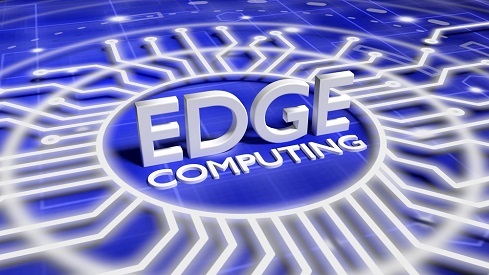
IT and end users need to collaborate and agree on policies and procedures for edge security, software updates, asset management and technology deployment.
From networks and integration to failover, asset management, and security, there will be plenty for IT to do to ensure adequate support for edge technology. Here are 10 key areas of critical work:
1. Zero-trust networks and security. Passwords are shared on the production floor; and physical cages, intended to secure equipment, will be left open. These are inevitable occurrences in settings where most business users (and their managers) aren’t IT-savvy.
If you are IT, you have a responsibility to manage security across the enterprise. That includes what goes on at the edge. One approach to edge security is implementing zero-trust networks that automatically verify IP addresses and authenticate users from both inside and outside corporate walls. Zero-trust networks are well suited to the edge because they don’t depend upon end users to administer daily security. For physical security, video cameras around storage cages and technology deployment points can help.
2. Coordination with end business areas. Production, engineering, and operational managers are judged by the competencies and services they provide, not by their IT. But that doesn’t change the fact that appropriate security, governance, integration, data handling, and communication are needed at the edge. IT needs to do this, as well as provide technology support. These tasks should be performed in a cooperative and enabling spirit, not in a “big hammer” enforcement approach. The more IT and end users can work together harmoniously and cooperatively, the better life will be at the technological edge.
3. Vendor management. End users might initially contact and contract with edge vendors, but IT ultimately manages these vendor relationships. SLAs should be enumerated and monitored for performance and for uptime. Vendors should also be vetted for product support and enhancements. These are all areas IT is well suited for. To do this, IT must identify and keep pace with edge software, hardware, devices and network vendors to make sure that all the products and vendor relationships are documented and covered.
4. Vetting vendors. Vendors at the edge, like any other supplier, should be financially stable, have excellent and scalable solutions, and be willing to stand behind the technology they deliver. Equally important is vendor commitment to enterprise security, as all too many edge products are installed with default security based upon the minimal requirements of the technology. Because of this, IT should be actively involved in ensuring that new edge technology is properly secured to meet enterprise security standards.
5. DR planning and testing. Enterprise disaster recovery plans should be continuously updated for edge computing as it is being deployed. This is difficult to plan, budget, develop, and test for, since DR has historically been a background project that waits until other mission-critical projects with greater visibility are completed.
This shouldn’t be the case with edge technology, as it presents more risks and vulnerabilities than IT that is managed 24/7 in the data center.
Organizations lag when it comes to updating DR plans for edge computing,” said Dan Olds, partner at research firm OrionX Network. “Mission-critical systems, networks and devices that exist at the edge should be identified and planned for . . . You should also test your DR plan on a regular basis.”
6. Equipment tracking and asset management. Misplaced smart phones are a major issue in the consumer world and in companies. Other types of equipment and supplies can also be misplaced internally or in the field. In some cases, IT may not even be aware that these items belong to the company, especially when users at the edge are provisioning it.
An asset management system with sensor-tracking attached to devices can be a real help, with IT serving as the command center.
7. Have a strategy to deal with timely software updates and unusual operating systems. A diversity of edge technology and devices, many with proprietary operating systems, means that IT must find a way to keep all software updates current. This is especially important when vendors issue OS updates to correct security deficiencies.
An automated software distribution system with “push” settings for updates can help in this process.
8. Systems sunsetting. When new technology is deployed at the edge, it often displaces older technology. At remote edge facilities, end business users tend to stow old equipment away in closets and bays and then forget about it. They might not think about sensitive data that could be stored on that equipment. By regularly checking technology inventory and instituting “sunset” policies and procedures that decommission and disburse antiquated equipment, IT can address this problem.
9. Bandwidth strategy. Have you revisited your IT data, networks, storage and processing architecture for best of class performance at the edge as well as in the data center?
Your strategy might entail storing data locally at edge locations, and then either importing the data to a central data repository or leaving the data where it is. Alternately, cloud services can be used for storage and processing. In other cases, real-time data must be sent to remote and central sites around the company.
In all cases, planning for the edge is likely to disrupt former bandwidth allocations, since data payloads to and from the edge will increase.
You also must plan for 5G, as the communications protocol won’t work with a number of edge and mobile devices that are already in production. Financially, 5G deployments may also need to be timed with asset retirement and replacement cycles.
10. Integration and investment protection. In one use case, a company had thousands of legacy scanners at the edge that it needed to integrate with its ERP, manufacturing, and supply chain systems. With each scanner costing several thousands of dollars, the company couldn’t afford to just throw the scanners away. The company hired a data integration specialist (HULFT) to link all of the scanners into its systems with the use of HTML calls that HULFT developed.
This is just one example of the need for companies to modernize and onboard new technologies at the edge, without disrupting the investments in systems that they’ve already made.
Summing up
The growth of shadow IT and end user insertions of new technologies at the edge without IT’s knowledge suggest that IT might not be involved, but ultimately, IT will be. There simply isn’t any department better positioned or qualified to do the work of system, network, data and device integration, security, performance and tracking.
To do this at the edge, IT and end users need cooperative and collaborative relationships, with agreed upon policies and procedures in place for edge security, software updates, asset management and technology deployment.
It isn’t easy to achieve, but it’s a necessity when you live and deploy at the edge.
Mary E. Shacklett is an internationally recognized technology commentator and President of Transworld Data, a marketing and technology services firm. Prior to founding her own company, she was Vice President of Product Research and Software Development for Summit Information … View Full Bio
More Insights

Leave a Reply